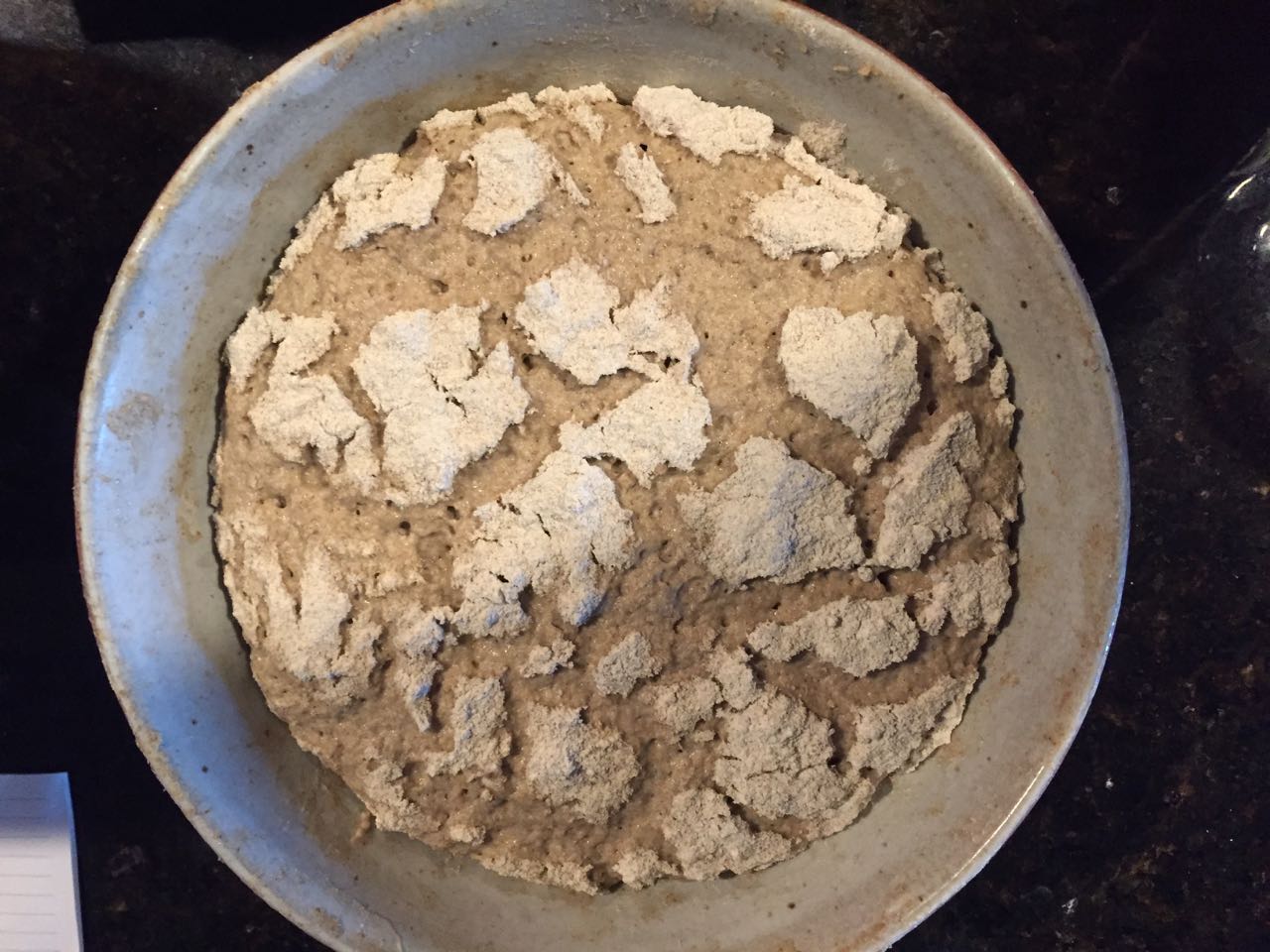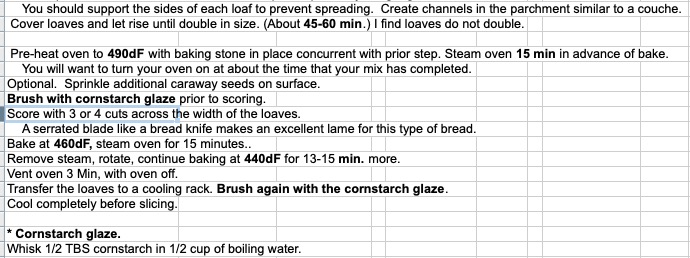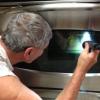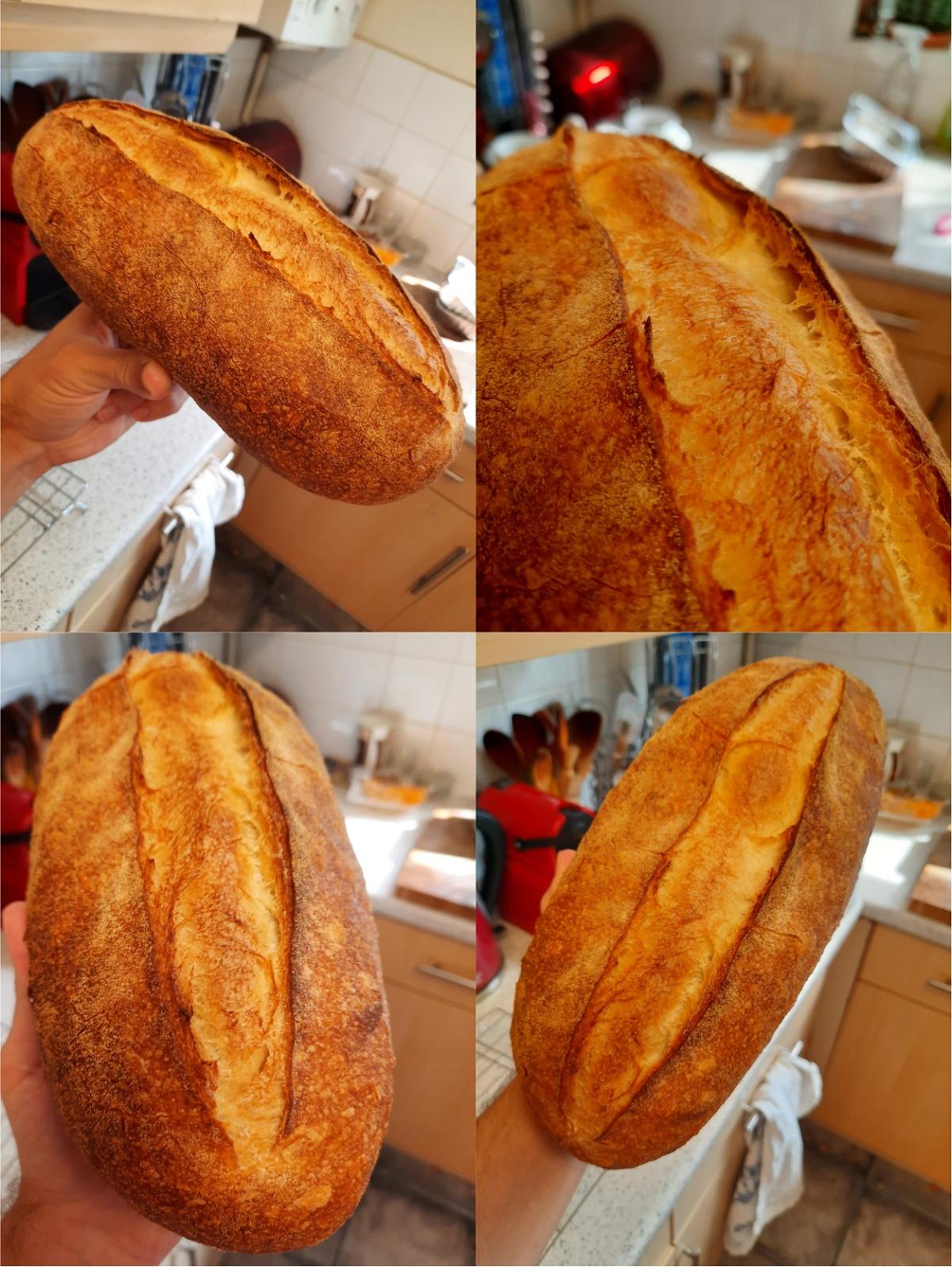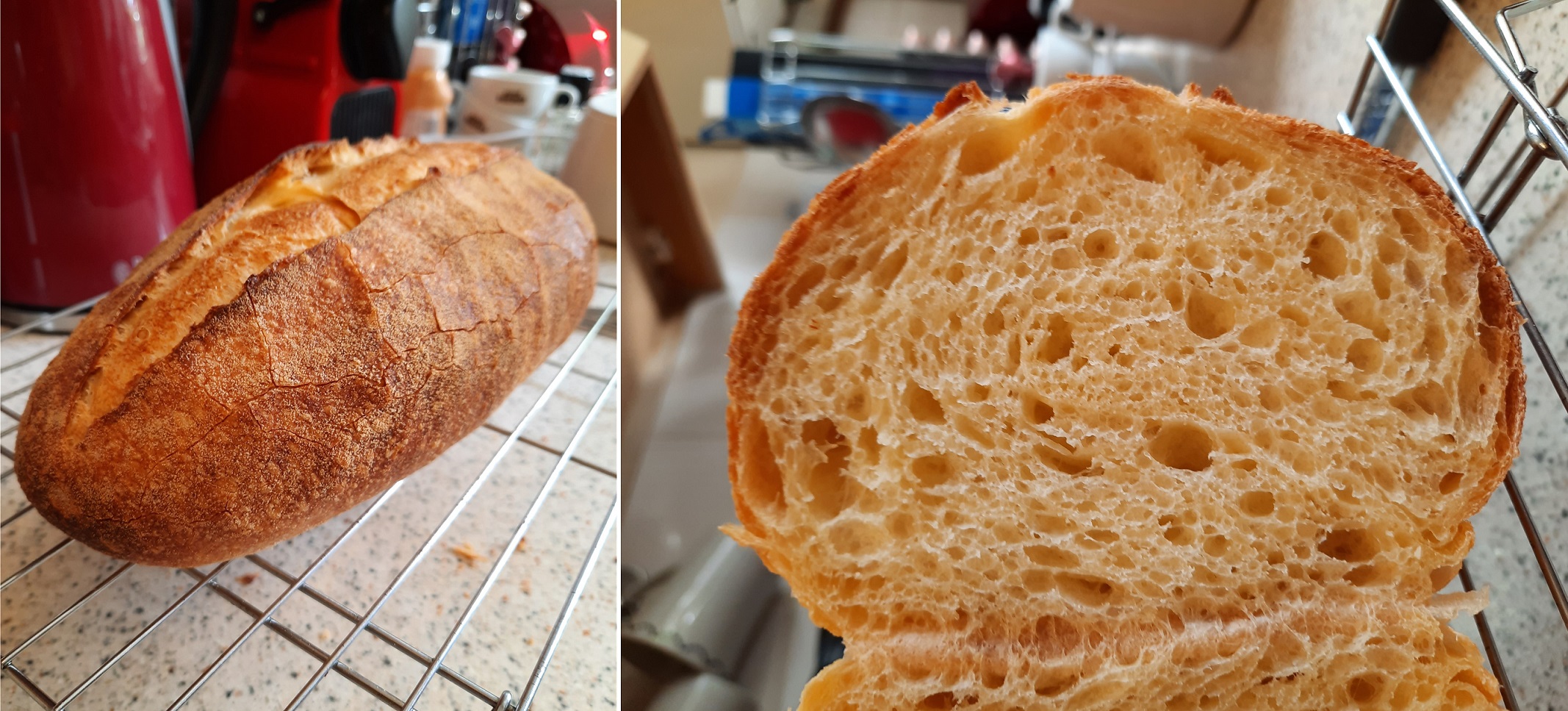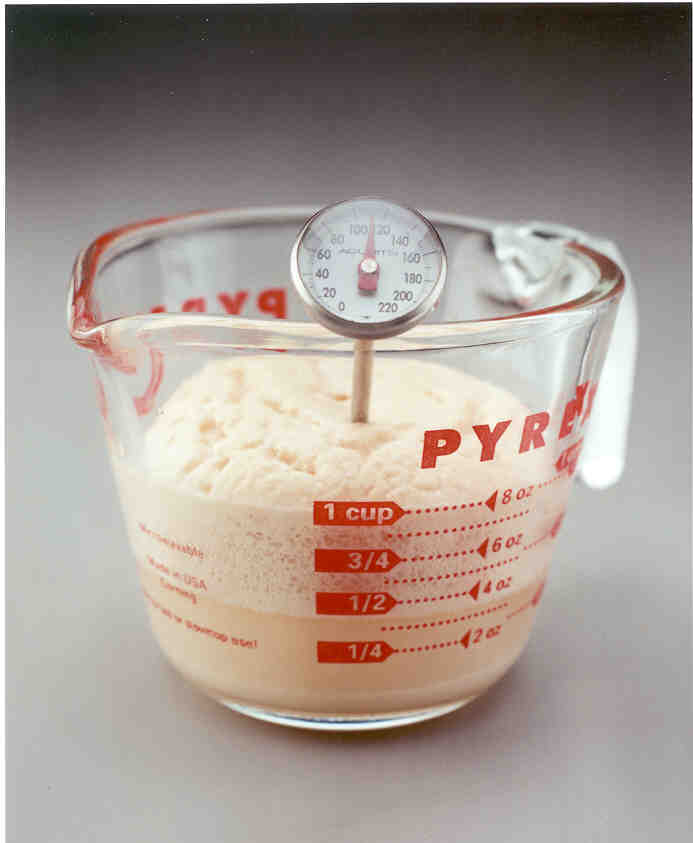Our latest Community Bake (CB) featured Baguettes and was a hit. Those that actively participated learned to bake baguettes of Artisan Quality. It seems the natural progression from there would be Ciabatta, the Italians answer to the French Baguette.
Here is an excerpt from Wikipedia -
"Ciabatta was first produced in 1982 by Arnaldo Cavallari, who called the bread ciabatta polesana after Polesine, the area he lived in. The recipe was subsequently licensed by Cavallari's company, Molini Adriesi, to bakers in 11 countries by 1999. Cavallari and other bakers in Italy were concerned by the popularity of sandwiches made from baguettes imported from France, which were endangering their businesses, and so set about trying to create an Italian alternative with which to make sandwiches. The recipe for ciabatta came about after several weeks trying variations of traditional bread recipes and consists of a soft, wet dough made with high gluten flour."
IAll bakers of every skill level are invited to participate. Novice bakers are especially welcomed and plenty of assistance will be available for the asking. The Community Bakes are non-competitive events that are designed around the idea of sharing kitchens with like minded bakers around the world, "cyber style". To participate, simply photograph and document your Ciabatta bakes. You are free to use any formula and process you wish. Commercial Yeast, sourdough, or a combination of both are completely acceptable. Once the participants gets active, many bakers will post their formulas and methods. There will be many variations to choose from.
Here is a list of our past CBs. They remain active and are monitored by numerous users that are ready, willing, and able to help if assistance is needed. A quick browse of past CBs will provide an accurate picture of what these events are all about.
******************************************************************************************
SOMETHING NEW - Since many of the CBs grow quite large, it can become difficult to follow the progress of each individual baker. Things get very spread out. In an attempt to alleviate congestion and consolidate individual baker’s bread post, the following is suggested.
- Post all bakes in the CB
- Copy and paste each bake into a dedicated BLOG post
- Paste all bakes into a single BLOG
- You may copy and paste the link to your BLOG post in the individual bake post as a reference for those that want to view your progess and evolution.
All participating bakers that consolidate their bakes the a BLO.g post will be linked in the original post for all to see.
Links to baker’s BLOGs that have posted a compiled list of bakes for this CB
******************************************************************************************
If you haven't eaten Ciabatta, you are in for a major surprise. The flavor, texture, and ultra thin crust make any sandwich special. Please join us and post your good, bad, and ugly bakes. Many old timers are probably tired of reading this (It is a personal mantra of mine), BUT... "we learn more from our mistakes than we do from our successes".
The following formula and process comes from Jeffrey Hamelman's book, " Bread - a baker's book of techniques and recipes". It is also available in Kindle version on Amazon.
NOTE - since the Total Dough Weight in the spreadsheet below was scaled to 1000 grams you can easily change the dough weight by multiplying each ingredient.
For example you decide to bake a 500 gram loaf.
Simply multiply the flour(570) by .5 to get 285. Water 371x.5=185.5 (round to 186).
Let's say you want 1500 grams of Total Dough Weight.
Flour - 570x1.5=855 and Water - 556.5
Does this with each and every ingredient to resize the formula to fit your needs.

*********************************************************
Below is a formula from Michael Wilson.
In Italy Ciabatta is mostly a CY leavened bread and the standard formula as per Giorilli is as follows:
Biga with 80% of the flour:400g bread flour180g water
1.3g Instant Dry Yeast
OR 4g fresh cake yeast Rise at 61-64F (16-18C) for 16-18 hrs Final dough:All of the biga
100g flour
220g water5g diastatic malt
10g salt
- Mix using the bassinage method until silky smooth.
- Rise in bulk until double, cut pieces, shape dust with plenty of flour and let leaven until ready.
********************************************************************************************
Ciabatta con pasta madre biga *** SEE THIS LINK ***
(SD biga) submitted by Michael Wilson
Biga: 16.5hrs @ ~18°C
300g flour
125g water
30g LM (50% hydration), refreshed twice

Main dough:
75g flour
3.5g diastatic malt
7.5g salt
200g water
15g olive oil
84.8% total hydration
81% PFF
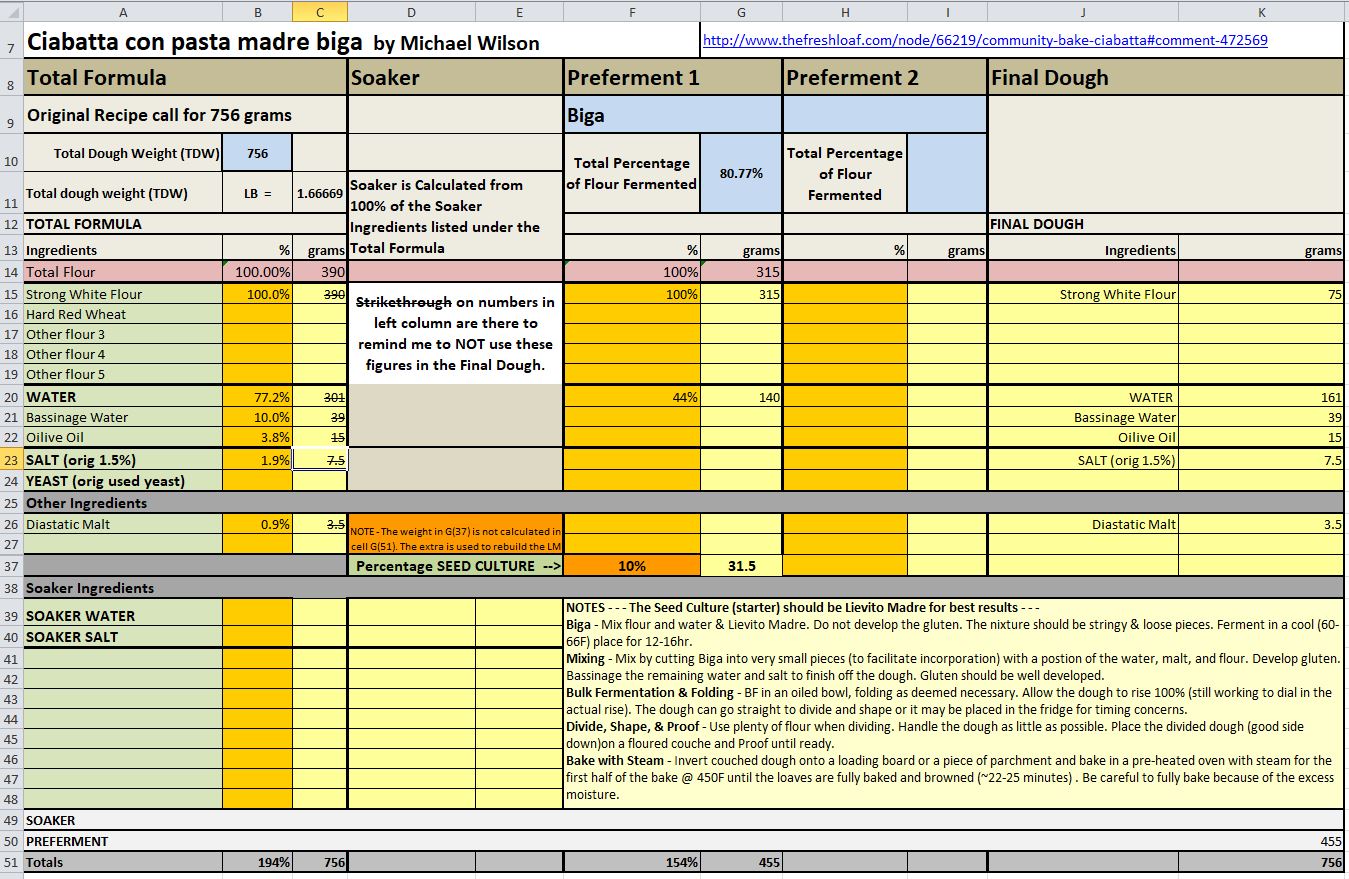
********************************************************************************************
While that is basically the standard approach, I am conscious that these authentic formulas don't necessarily translate all that well using American flours. With that in mind perhaps Craig Ponsford's formula is most appropriate. I'll see if I can track it down..********************************************************
******* PLEASE READ *******
Some of the Community Bakes get very large with many post. If a user replies to ANY post in the CB they will (by default) receive email notifications for all new replies. If you post a reply and later you find that the notifications to that Topic are more than you would like you can either (1) opt out or (2) recieve replies to your post only. See image below.

Danny








